Would you renovate a garden? Or would it better to just call in the diggers and start again from scratch?
Perhaps you’ve rented or bought a house with a neglected garden. Every now and then you glimpse something glorious – a rose or a peony – almost smothered by green mounds of weeds, seedlings and out-of-control shrubs.
Garden maker Posy Gentles was asked to restore the garden of architect Tom Croft. It had been created by his grandparents in the 1930s, then gardened by his parents up through the 1970s and 80s, but very little had been done to it since the late 1980s.
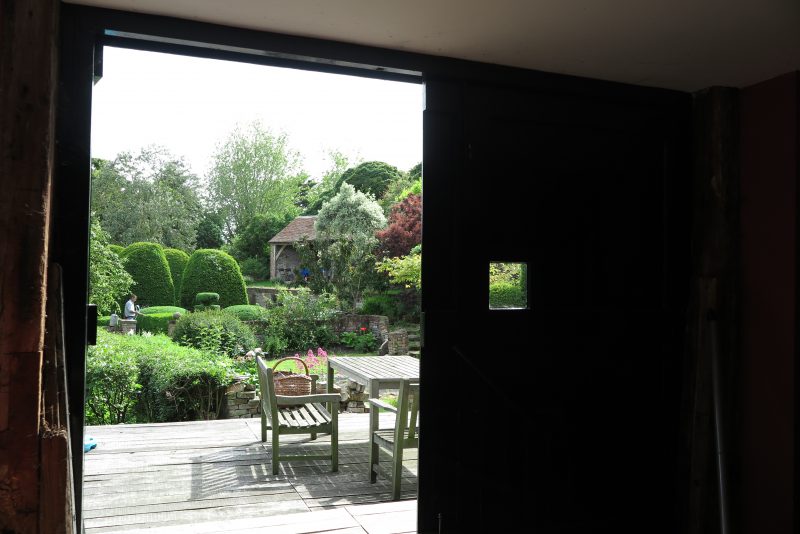
Architect Tom Croft’s barn in Kent. The garden is framed through the barn doors. I love the colour he has painted the woodwork – it looks black but is called Amsterdam Green from Papers & Paints.
It has stunning mature topiary. His mother also planted many hybrid tea roses and other shrubs, typical of mid twentieth century gardening.
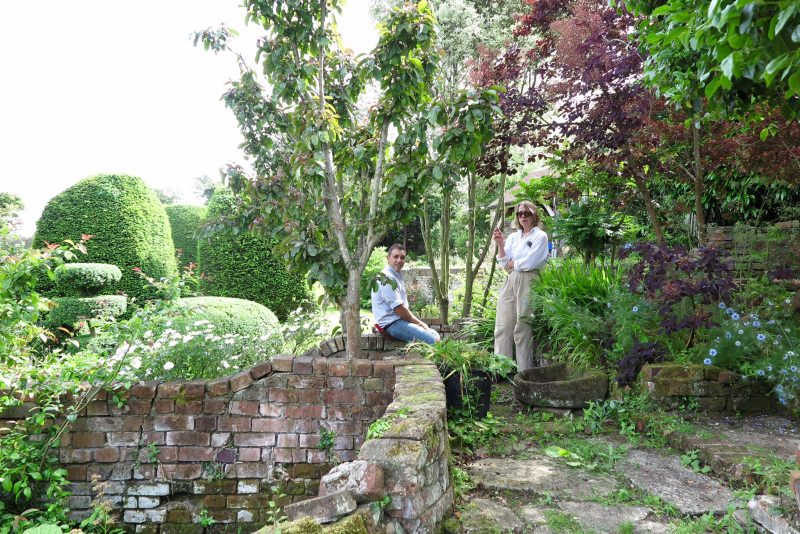
Posy Gentles and her assistant, Salvatore, in the garden. The walls are crumbling because they were over-run with weeds.
Some plants had disappeared completely beneath brambles, nettles, self-seeded sycamores and sticky grass. Others had grown tall and leggy in search of the light.
But it has a magic about it that a brand new garden can never hope to achieve. There is weathered brick and stone, while moss and gnarled trees offer hiding places for wildlife.
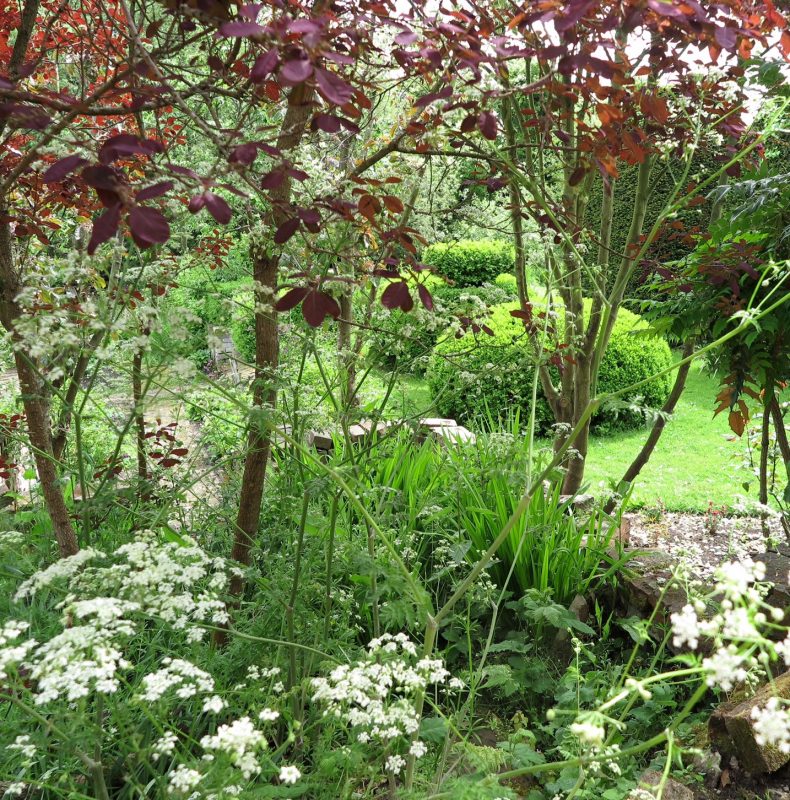
This cotinus had grown tall and leggy over a mound of brambles. Clearing them away reveals a charming, see-through multi-stemmed effect – a contemporary treatment of a traditional shrub.
Posy and her assistant Salvatore, have coaxed it back to life by weeding, clearing and pruning. Some beds are being replanted, but in others the glorious reds, oranges, yellows and pinks of Tom’s mother’s roses now bloom again.

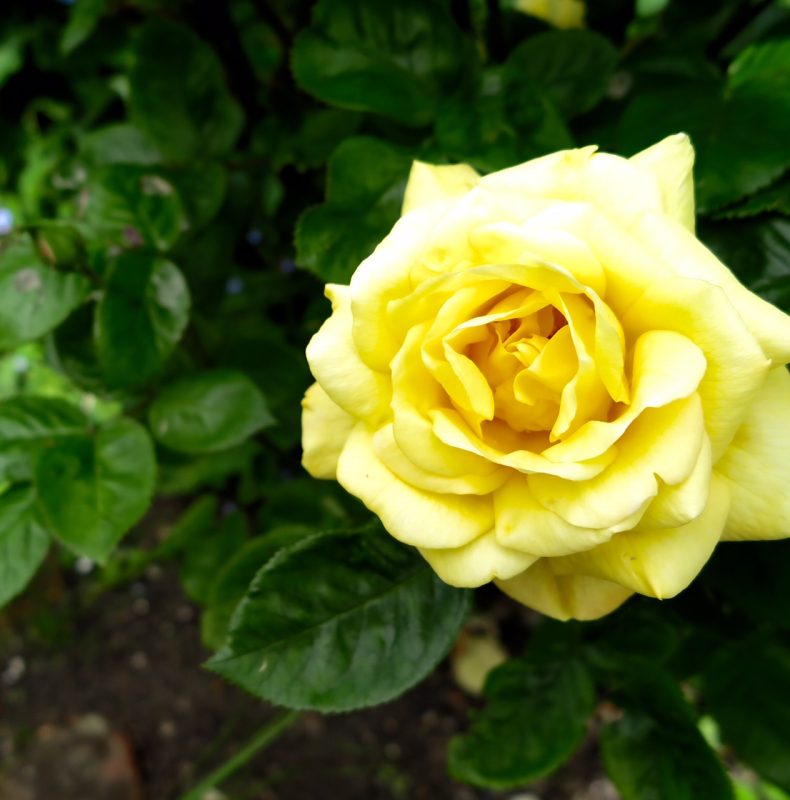
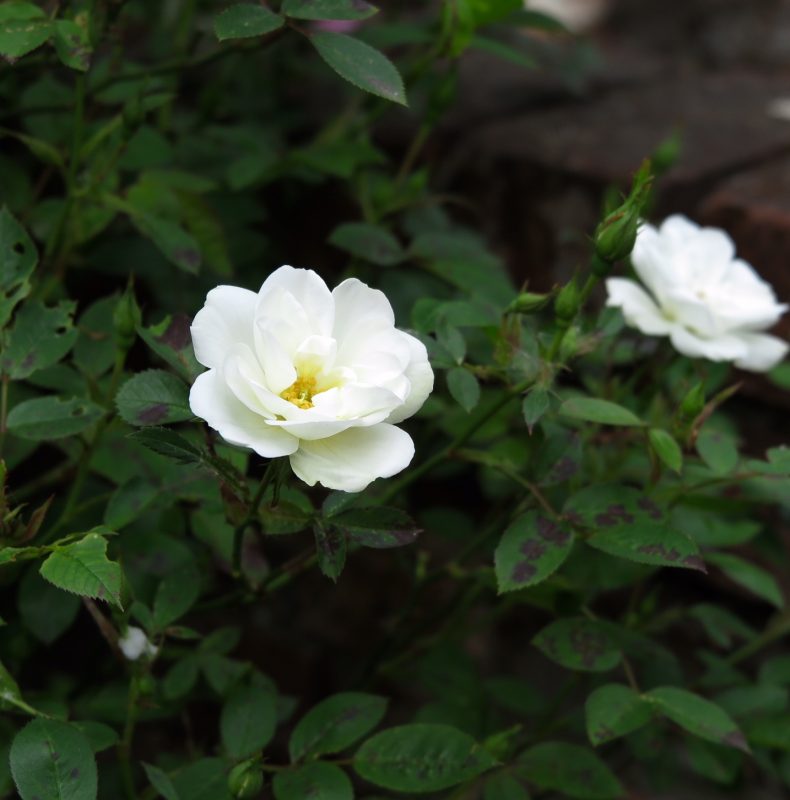
It’s remarkable how good some roses are at surviving decades of neglect – see here for another post on how a community garden in West London has restored an award-winning rose garden that disappeared completely under brambles. Twentieth century hybrid tea roses fell out of popularity because of their twiggy, awkward structure and the fact that their foliage often got diseased. But if you find one in your garden, give it a chance.
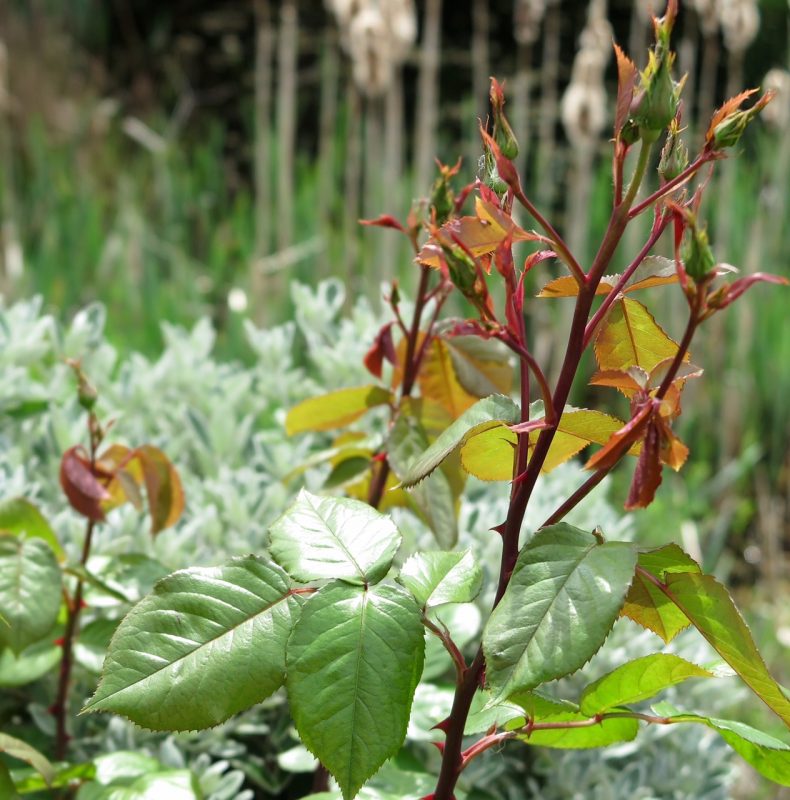
This rose was completely covered by the silvery grey Brachyglottis (senecio). Posy saw a tip poking out and cut the brachyglottis back.
Re-discovering plants from another age in your garden is a bit like having antiques or vintage furniture in your house. They create or add to a sense of history and place.
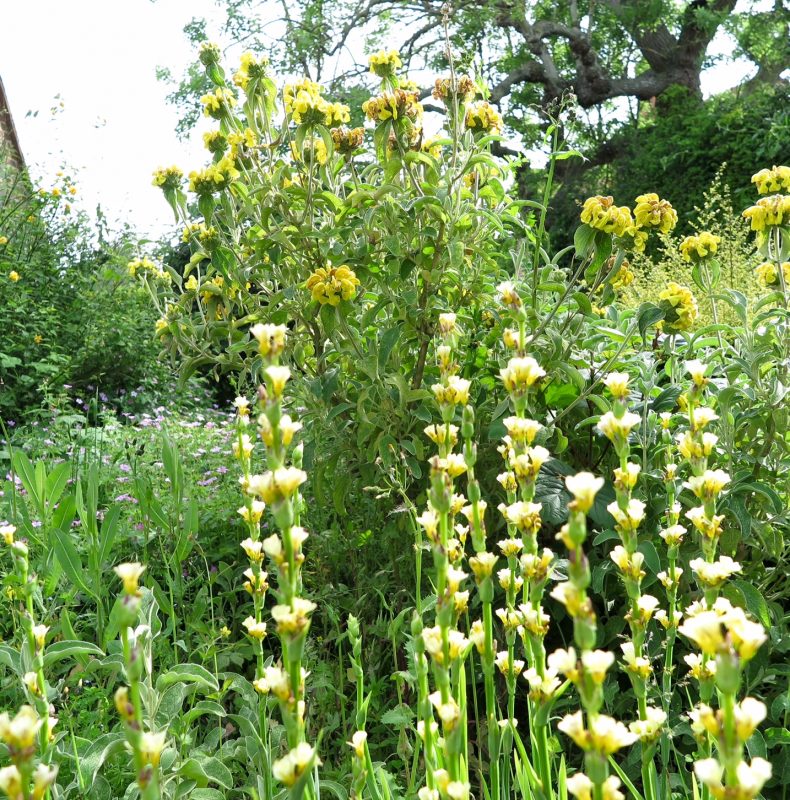
Some self-seeding plants can be encouraged to flourish – it saves replanting beds! Here the yellow pom-poms of phlomis and the creamy stalks of sisyrinchium make a lovely bed for a shady corner.
Renovate a garden – step one
Step one is ‘weed, weed, weed.’ If you take a small section of the garden at a time and clear it by hand, you will get to know your garden intimately.
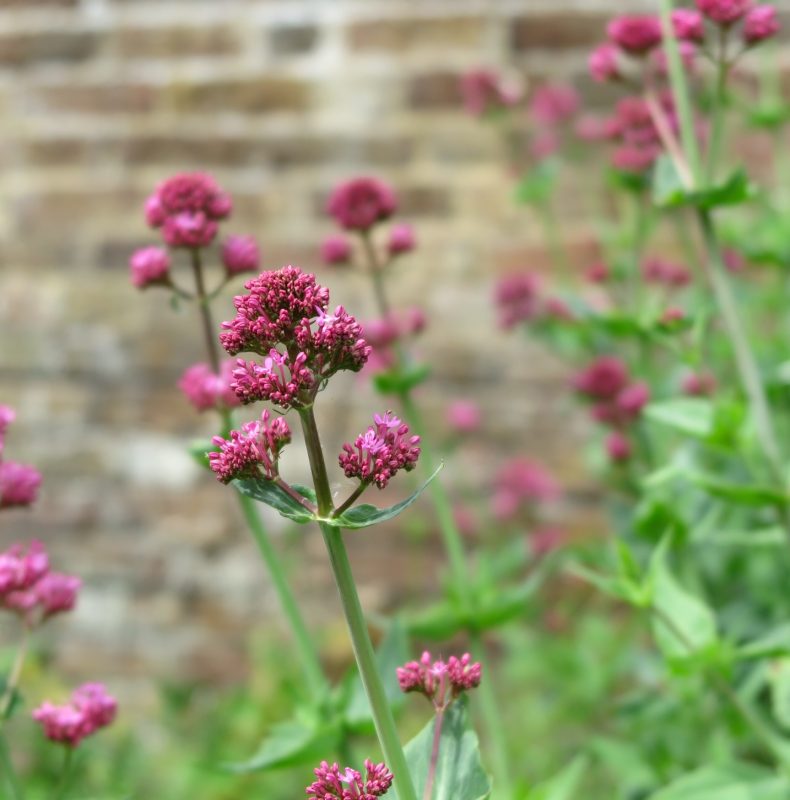
Red valerian – very pretty but here it’s a weed. It covered the garden walls and its roots ate away at the cement. Posy is clearing the valerian away from the garden.
Posy advises weeding after it’s rained, because weeds will be easier to pull out. You will need a stout small fork, plus a full-size garden fork for stubborn roots such as brambles. Don’t compost the weeds, to be on the safe side.
Here are some weeding tips from my One Minute Gardening Tips series:
Renovate a garden – step two
Pruning is your next task. Consider every tree and shrub carefully. Do you really need to take it out? Mature trees give a garden texture. Could pruning give you the space and light you need? (there is more about how to prune mature trees and shrubs to allow light through here).
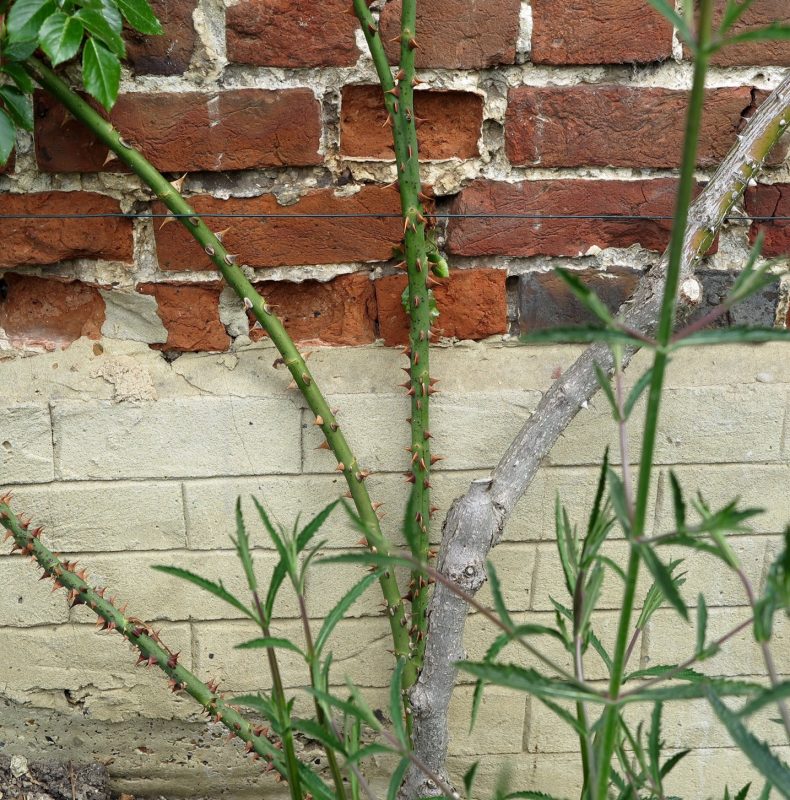
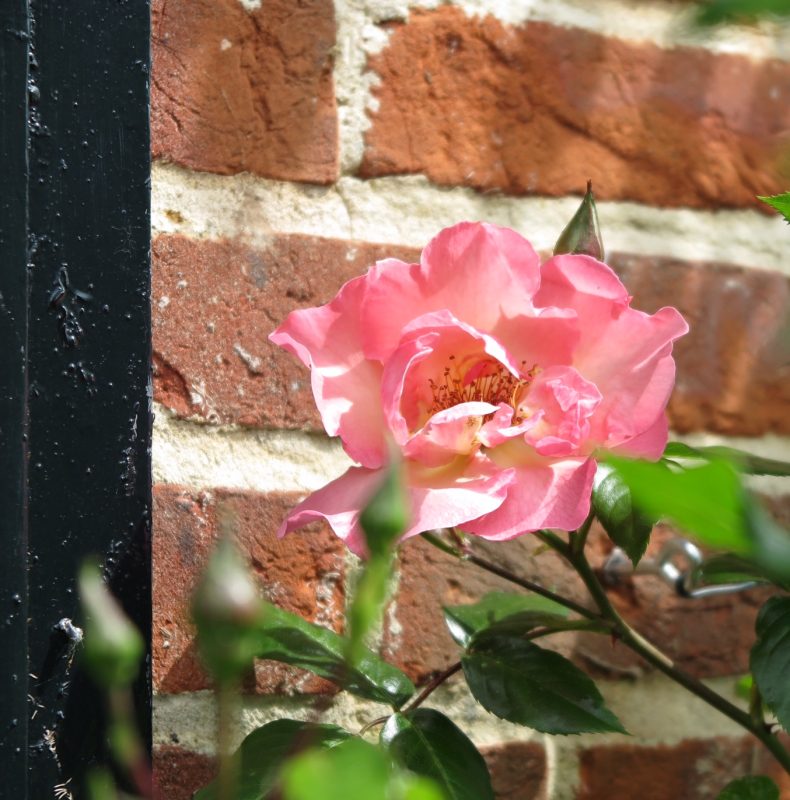
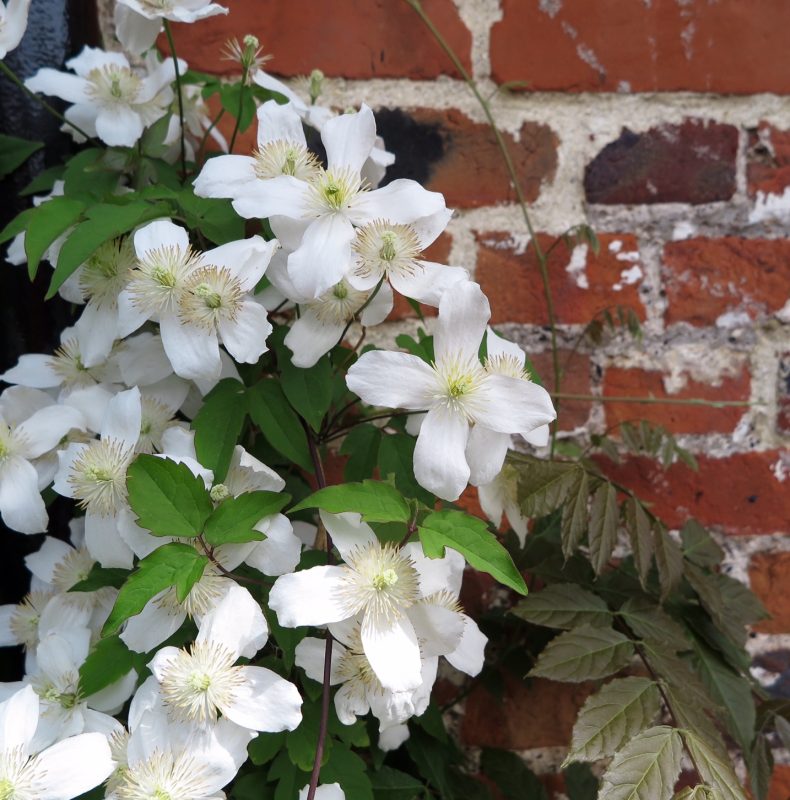
Renovate a garden – step three
Step three is to feed – where plants or trees need it. There is more about how and when to feed your garden with fertilisers here. (And a competition to win fertiliser here!)
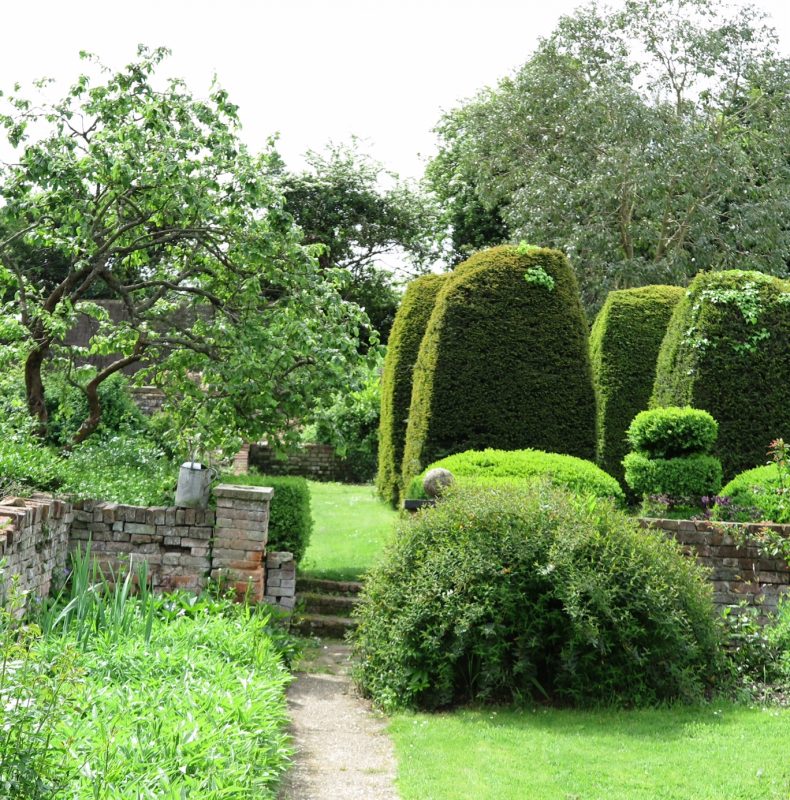
The massive twentieth century yew topiary shapes are gradually being restored – doing it too quickly might kill them.
The stunning yew topiary in Tom’s garden is overgrown, but it would be unwise to chop it back into shape immediately. If you cut into the brown wood, then the yew won’t regrow. You either have to restore it gradually over several years or cut it right down so that it regrows from the trunk.
Posy and Salvatore are going to bring light into the middle of the yews by levelling them at the top and pulling out the ivy. They are also introducing a little more light by ‘lifting its skirt’ (cutting off some lower branches so that it stands a foot or so off the ground.
They are feeding the yew with fertiliser, and will cut it back gradually as new growth, stimulated by the light, greens up from inside the plant.
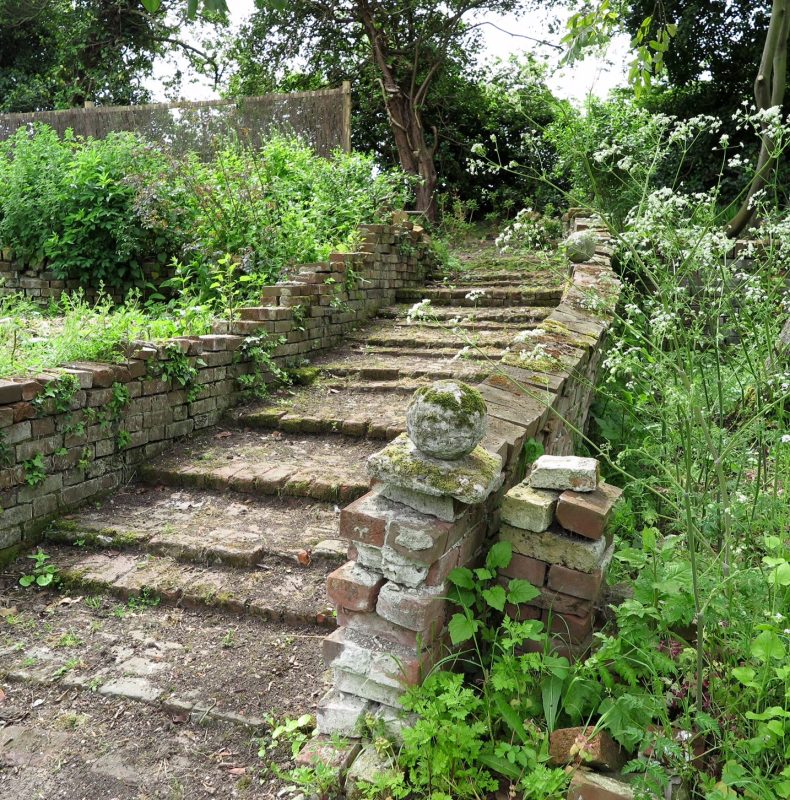
The bed to the right of these steps looks very pretty with cow parsley, but it will ultimately be planted up.
And once you’ve done these three steps – weed, prune and fertilise – you can look at the gaps and buy new plants! You’ll have fewer to buy, and a much smaller bill for re-stocking the garden. And the final effect will be something that could never have been achieved by digging out the lot.
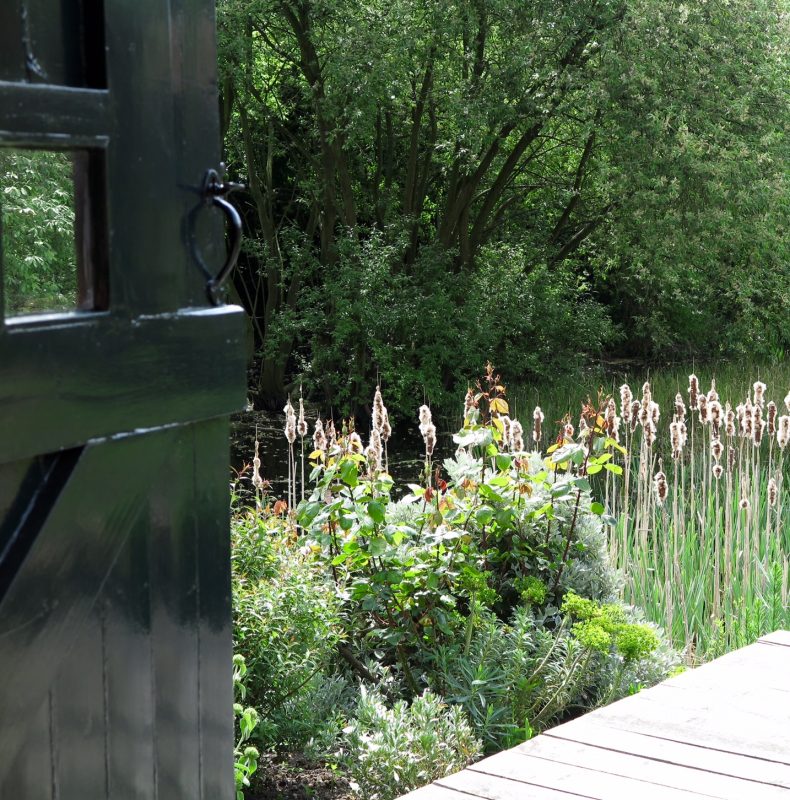
The old farm pond sits in front of the barn – as farm ponds always did. It has not yet been restored, and is overgrown with bulrushes and trees.
Some friends of ours cleared their garden while they were having their house renovated, figuring that getting everything cleared away at once would save time and money in the long run.
Now they’ve realised that replacing the whole garden with semi-mature trees is going to cost much more, and that it will be years before their garden fully achieves the look they want. They wish they’d left some of the mature trees and shrubs in, to give the garden atmosphere.
For garden renovation, contact Posy Gentles here. For Thomas Croft Architecture, click here.
And do share this using the buttons below! Thank you.
The post How to renovate a garden without losing its magic appeared first on The Middle-Sized Garden.
from The Middle-Sized Garden http://www.themiddlesizedgarden.co.uk/renovate-garden-without-losing-magic/
No comments:
Post a Comment